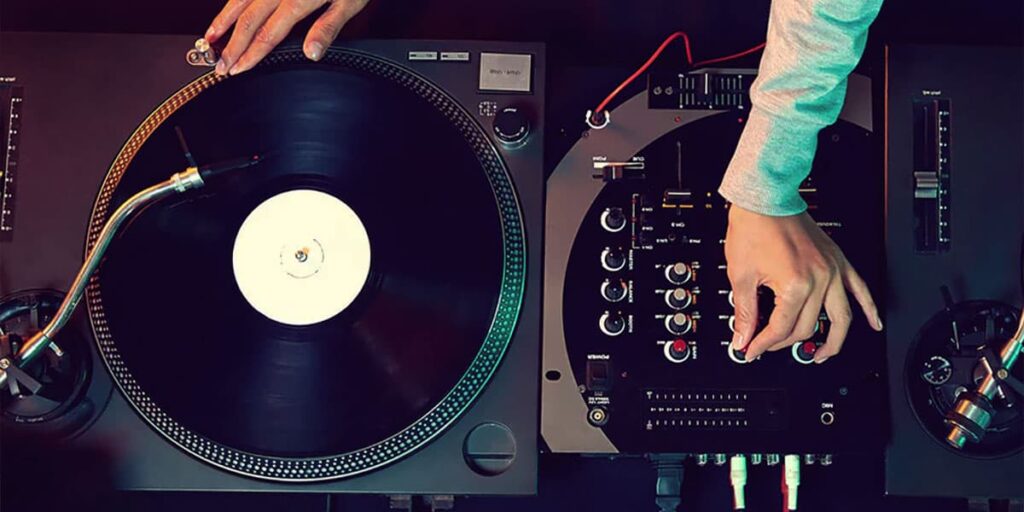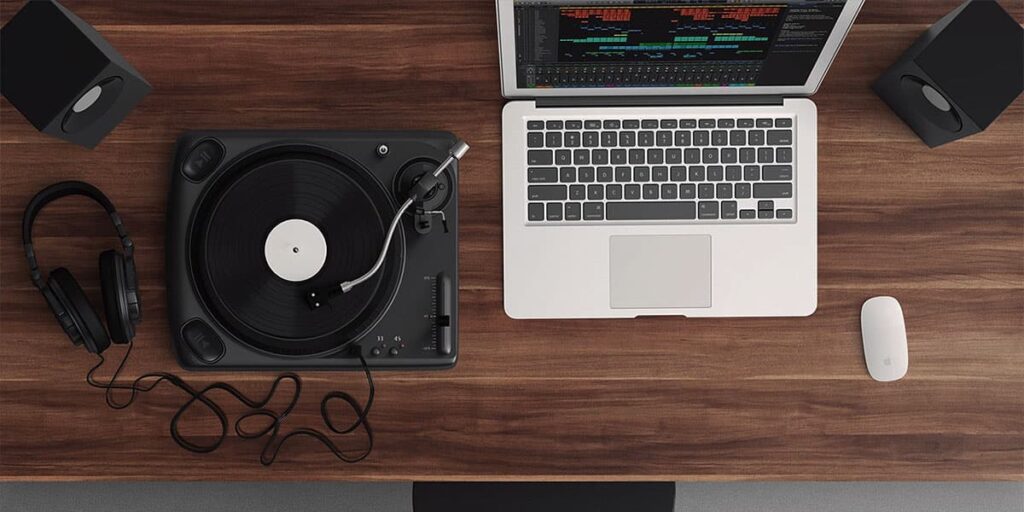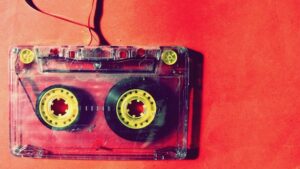Exploring the Evolution of Turntables in Music Creation
Turntables don’t just let us play records; they have shaped how music itself gets made. These devices have transformed musical creation throughout history. For example, when DJs spin vinyl back and forth to isolate beats and loops, whole new genres are born. Records blurred styles as sampled riffs brought rock, funk, and soul together in groundbreaking hybrid fusion. More than playing songs, turntables birthed new ones. Engineers cut master acetates using turntable tech to spread music worldwide. Eight decades since the first LPs, turntables drive creation more than ever through digital production tools.
This article explores how the turntable evolution of turntables in music production continues to drive innovation today, changing our listening experience with every rotation. Also, we’ll talk about interesting future trends in turntable technology.

The Evolution of Turntables in Music Production
Turntables have been shaping music production practically since its inception. When radio first boomed in the 1920s and 30s, the best sound came from spinning a vinyl record live over the airwaves. This led to finer-tuned turntables to keep audio steady during broadcasts.
Another leap came as LPs and multi-track recording let studios overlay sounds and tools like variable speed turntables alter the pitch of playback. Musicians could record a riff and then tweak it to reappear elsewhere on a track, birthing new sounds.
But the biggest shift happened when hip-hop DJ pioneers used twin turntables to isolate drum breaks. Mixing records birthed sampling, the signature of so much modern music. And
turntable techniques became an instrument themselves within bands.
From those early radio days to anchoring recording studios to performance tools for new genres, the turntable has advanced hand in hand with musical creativity. Enabling concept transfer across genres, timed playback tweaks in recording, and even shaping identity with iconic decks like the legendary Technics SL-1200 – our music keeps evolving on the spinning wheels of turntable technology.
Turntables in DJ Culture: Sampling, Scratching, and Mixing
Turntables transformed music when DJs like Grandmaster Flash discovered sampling and beatmaking with turntables. Looping the best drum breaks lets studios drop sick beats wherever needed. DJ Kool Herc took it deeper by playing the same record on twin decks to extend the party. His mixing showed how two turntables could flow tunes together endlessly when matched correctly.
Then came scratching – moving records back with the platter by hand as an instrument for hits, squeals, or tunes. Grand Wizard Theodore scratched so fast he busted needles! Later pioneers like Jazzy Jeff took scratches melodically. And Craze ripped it up, beatmaking and juggling beats between four decks at lightning speed.
From groovy disco to frantic EDM, turntable tricks birthed new music. DJs curate and create beats through the decks. Their turntable techniques opened musical wormholes – letting jazz meets punk meet funk in radical remixes. All sparked by vinyl, needles, and imagination. No party was ever the same.

Turntables in Genre Development
Hip-hop originators spun back beats for MCs to toast over using genre-specific turntable techniques, the breaks becoming as iconic as brands. Experimental artists sliced vinyl into collages, weaving disparate threads into avant-garde styles. Reggae emphasized heavy bass and used delay effects during the seamless segueing of tracks. Electronica tweaked pitch and direction – scratching, stopping, reversing – utterly transforming tone. The same machines yielded vastly distinct sounds between genres and regions. But vinyl’s tactile nature enabled infinite creative possibilities. Through unique cultural applications, the turntable manifested a versatile sonic palette – driving wider artistic evolution across electronic, rap, and numerous emerging styles.
Future Trends and Innovations
Tomorrow’s turntables will likely blend analog hearts with digital brains. New mediums like removable vinyl discs are appearing so DJs can still scratch physical platters. Yet custom apps already allow remote spinning from phones and tablets. Soon, AI tools may mix entire sets to a defined mood at the touch of a button, incorporating analog music production methods.
Digital vinyl systems embed secret soundwave info in records. Players with optical readers then translate each nuance into output old decks could never match, alongside analog music production methods. Multiformat decks playing vinyl, streaming tracks, and video mixes hint at club setups to come.
Purists may call foul, but innovation marches on. Perhaps the true future is not replacing the turntable but evolving its role. Letting AI handle menial mixing so DJs get enhanced control of new filters, live production tricks, and more expressive robotic rigs. Preserving tradition while progress powers performance potential. The turntable tonearm may flex digital muscles, but its true heart will stay analog.
